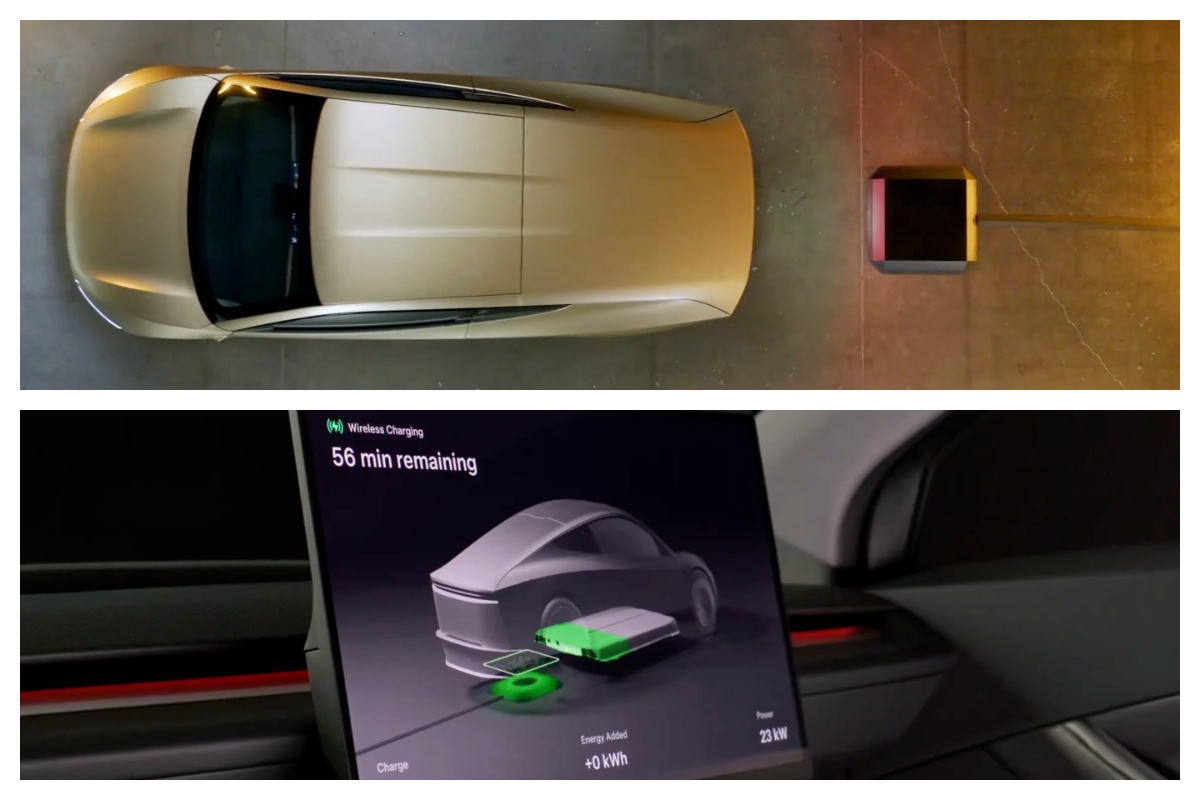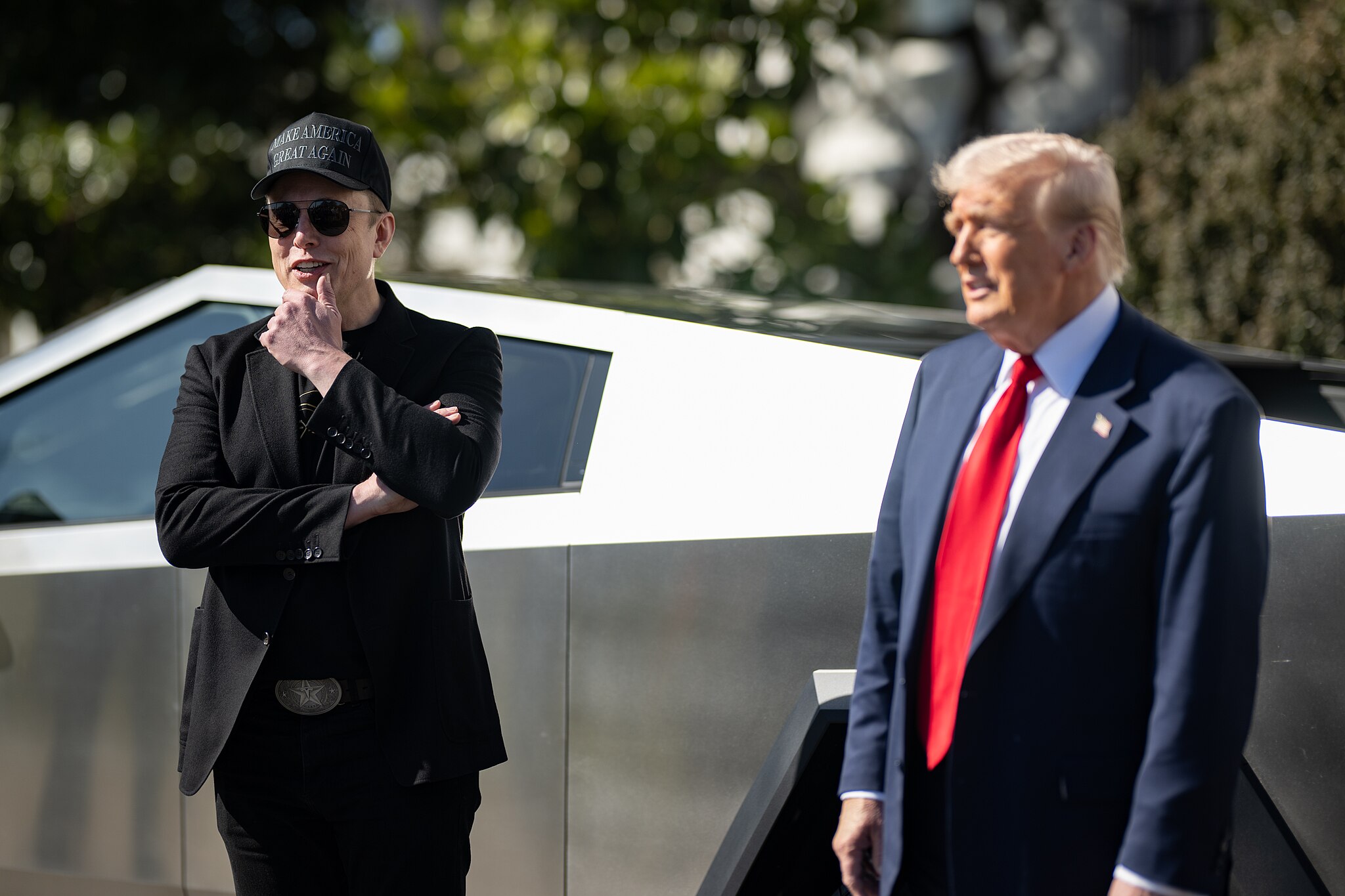Elon Musk
Elon Musk says this essential Tesla Robotaxi feature will be here soon
Tesla will work to solve automatic parking at available Supercharger stalls with future updates.

Elon Musk reiterated that one feature, which is ultimately an essential part of the operation of the Tesla Robotaxi platform, will be here soon.
Tesla released a new video of its longest Full Self-Driving demo yesterday, showing off a zero-intervention drive from San Francisco to Los Angeles. The drive is roughly seven hours and 360 miles long, and not a single need for the driver to touch the wheel was recorded.
Tesla flexes its most impressive and longest Full Self-Driving demo yet
There was one question that was brought up by an owner that brings up an interesting point. Tesla still needs to solve the vehicle’s ability to pull into Superchargers automatically, something that does not currently have a high success rate, at least for the owner who got a response from CEO Elon Musk.
Musk assured him that a Tesla’s ability to pull into open parking spaces at Superchargers would be more reliable with future software updates. Owners can see how many and which exact stalls are available before traveling to a Supercharger, so Teslas should be able to identify these stalls and pull in automatically:
Yeah, it will work essentially perfectly with future software updates
— Elon Musk (@elonmusk) August 12, 2025
This is a small part of what will be imperative for the charging experience when Robotaxi launches in the coming years. Tesla plans to enable customer-owned cars to potentially enter the Robotaxi fleet and become an autonomous ride-sharing vehicle by next year.
However, it still needs to figure out autonomous charging. There are two parts to that process: pulling into the spot and charging without human need to connect the Supercharger to the vehicle.
Tesla used to consider a robotic snake-arm charger for this, but it has talked about induction charging more recently. Wireless charging seems to be the route that Tesla plans to go, but it might take some time to resolve the energy loss issue and make it an efficient charging method.
Tesla flexes Robotaxi wireless charging — autonomy from top to bottom
Tesla has said its wireless charging efficiency is “well above 90 percent.”
Nevertheless, Tesla is still working toward figuring out all of the edge cases of Robotaxi operation. Figuring out charging without the need of a human is just one part of the puzzle it still has yet to solve, but with its improvements over the past few years, there’s no doubt Tesla will find the missing piece.

Elon Musk
Tesla stands to gain from Elon Musk’s rekindled friendship with President Trump
“He’s 80% super genius and 20% he makes mistakes, but he’s a good guy. He’s a well-meaning person.”

Tesla CEO Elon Musk and President Donald Trump are back in each other’s good graces, and after a lengthy period where the two were at odds, the pair seemed to make up back in September.
The two were spotted at dinner at Trump’s Mar-a-Lago estate in West Palm Beach over the weekend, which was followed by a press conference on Air Force One, where the President called Musk, “great.”
He continued:
“He’s 80% super genius and 20% he makes mistakes, but he’s a good guy. He’s a well-meaning person.”
Musk previously had a position in Trump’s White House, as he was in charge of reducing government spending and waste by leading the Department of Government Efficiency (DOGE). Musk stepped back from his role in the government last year to focus on Tesla and SpaceX, as well as other projects.
Trump tonight on @elonmusk: “Elon’s great. He’s 80% super genius and 20% he makes mistakes, but he’s a good guy. He’s a well meaning person.” pic.twitter.com/QUprw06bie
— Sawyer Merritt (@SawyerMerritt) January 5, 2026
However, Musk, back in Trump’s good graces, stands to get some assistance for Tesla from the White House moving forward, especially as he and the President are back to being friends and allies.
Reduced Scrutiny from a Regulatory Standpoint
Tesla has been the subject of several National Highway Traffic Safety Administration (NHTSA) probes, including ones that dive into Autopilot and Full Self-Driving and incidents involving the two.
Trump has already initiated a more relaxed environment for autonomous vehicle oversight. Last January, he proposed a voluntary framework system for self-driving vehicles, which reduced barriers for companies involved with autonomy.
In April, he relaxed crash reporting and exemptions for autonomous vehicles, creating a clearer pathway for companies to innovate and easing compliance burdens.
In September, Transportation Secretary Sean P. Duffy led efforts to update FMVSS, eliminating redundant human-driver requirements. This aimed to create a single national standard, boosting deployment and eliminating much of the bureaucracy that stalls innovation.
Favorable Autonomous Vehicle Framework
Some of the moves that were mentioned previously will assist Tesla in rolling out its Robotaxi network across the country, and although it currently has to go through the process on a state-level, things could become easier for Tesla and other companies exploring self-driving vehicles.
Musk could have a direct line to Trump that would help create fewer regulatory barriers for the companies involved in developing autonomous vehicles, which would directly benefit Tesla, but also its competitors like Waymo.
Protection from International Competition via Trade Policies
It is no secret that the President is focused on domesticating manufacturing, AI efforts, and everything in between. This is enforced by the tariffs the White House enforced last year, which have prioritized U.S.-based companies.
This could shield Tesla from potential foreign competitors, especially ones like BYD, which have been formidable opponents.
Overall, these gains stem from a more aligned political environment, where Musk’s influence could prioritize deregulation over enforcement; this leads to more innovation and relaxed regulations, but there are some risks. However, outcomes are dependent on the depth of President Trump and Musk’s reconciliation.
Long-term benefits to Tesla would require concrete policy actions.
Elon Musk
Tesla CEO Elon Musk drops massive bomb about Cybercab
“And there is so much to this car that is not obvious on the surface,” Musk said.

Tesla CEO Elon Musk dropped a massive bomb about the Cybercab, which is the company’s fully autonomous ride-hailing vehicle that will enter production later this year.
The Cybercab was unveiled back in October 2024 at the company’s “We, Robot” event in Los Angeles, and is among the major catalysts for the company’s growth in the coming years. It is expected to push Tesla into a major growth phase, especially as the automaker is transitioning into more of an AI and Robotics company than anything else.
The Cybercab will enable completely autonomous ride-hailing for Tesla, and although its other vehicles will also be capable of this technology, the Cybercab is slightly different. It will have no steering wheel or pedals, and will allow two occupants to travel from Point A to Point B with zero responsibilities within the car.
Tesla shares epic 2025 recap video, confirms start of Cybercab production
Details on the Cybercab are pretty face value at this point: we know Tesla is enabling 1-2 passengers to ride in it at a time, and this strategy was based on statistics that show most ride-hailing trips have no more than two occupants. It will also have in-vehicle entertainment options accessible from the center touchscreen.
It will also have wireless charging capabilities, which were displayed at “We, Robot,” and there could be more features that will be highly beneficial to riders, offering a full-fledged autonomous experience.
Musk dropped a big hint that there is much more to the Cybercab than what we know, as a post on X said that “there is so much to this car that is not obvious on the surface.”
And there is so much to this car that is not obvious on the surface
— Elon Musk (@elonmusk) January 2, 2026
As the Cybercab is expected to enter production later this year, Tesla is surely going to include a handful of things they have not yet revealed to the public.
Musk seems to be indicating that some of the features will make it even more groundbreaking, and the idea is to enable a truly autonomous experience from start to finish for riders. Everything from climate control to emergency systems, and more, should be included with the car.
It seems more likely than not that Tesla will make the Cybercab its smartest vehicle so far, as if its current lineup is not already extremely intelligent, user-friendly, and intuitive.
Elon Musk
Tesla analyst breaks down delivery report: ‘A step in the right direction’
“This will be viewed as better than feared deliveries and a step in the right direction for the Tesla story heading into 2026,” Ives wrote.

Tesla analyst Dan Ives of Wedbush released a new note on Friday morning just after the company released production and delivery figures for Q4 and the full year of 2025, stating that the numbers, while slightly underwhelming, are “better than feared” and as “a step in the right direction.”
Tesla reported production of 434,358 and deliveries of 418,227 for the fourth quarter, while 1,654,667 vehicles were produced and 1,636,129 cars were delivered for the full year.
Tesla releases Q4 and FY 2025 vehicle delivery and production report
Interestingly, the company posted its own consensus figures that were compiled from various firms on its website a few days ago, where expectations were set at 1,640,752 cars for the year. Tesla fell about 4,000 units short of that. One of the areas where Tesla excelled was energy deployments, which totaled 46.7 GWh for the year.
🚨 Wedbush’s Dan Ives has released a new note on Tesla $TSLA:
“Tesla announced its FY4Q25 delivery numbers this morning coming in at 418.2k vehicles slightly below the company’s consensus delivery estimate of 422.9k but much better than the whisper numbers of ~410k as the…
— TESLARATI (@Teslarati) January 2, 2026
In terms of vehicle deliveries, Ives writes that Tesla certainly has some things to work through if it wants to return to growth in that aspect, especially with the loss of the $7,500 tax credit in the U.S. and “continuous headwinds” for the company in Europe.
However, Ives also believes that, given the delivery numbers, which were on par with expectations, Tesla is positioned well for a strong 2026, especially with its AI focus, Robotaxi and Cybercab development, and energy:
“This will be viewed as better than feared deliveries and a step in the right direction for the Tesla story heading into 2026. We look forward to hearing more at the company’s 4Q25 call on January 28th. AI Valuation – The Focus Throughout 2026. We believe Tesla could reach a $2 trillion market cap over the coming year and, in a bull case scenario, $3 trillion by the end of 2026…as full-scale volume production begins with the autonomous and robotics roadmap…The company has started to test the all-important Cybercab in Austin over the past few weeks, which is an incremental step towards launching in 2026 with important volume production of Cybercabs starting in April/May, which remains the golden goose in unlocking TSLA’s AI valuation.”
It’s no secret that for the past several years, Tesla’s vehicle delivery numbers have been the main focus of investors and analysts have looked at them as an indicator of company health to a certain extent. The problem with that narrative in 2025 and 2026 is that Tesla is now focusing more on the deployment of Full Self-Driving, its Optimus project, AI development, and Cybercab.
While vehicle deliveries still hold importance, it is more crucial to note that Tesla’s overall environment as a business relies on much more than just how many cars are purchased. That metric, to a certain extent, is fading in importance in the grand scheme of things, but it will never totally disappear.
Ives and Wedbush maintained their $600 price target and an ‘Outperform’ rating on the stock.







